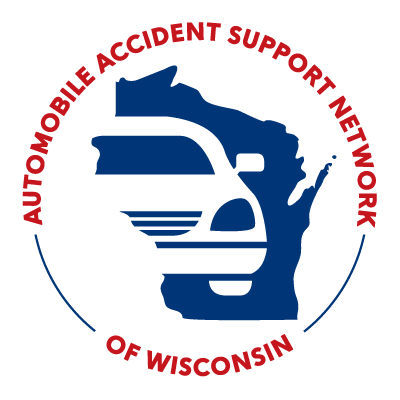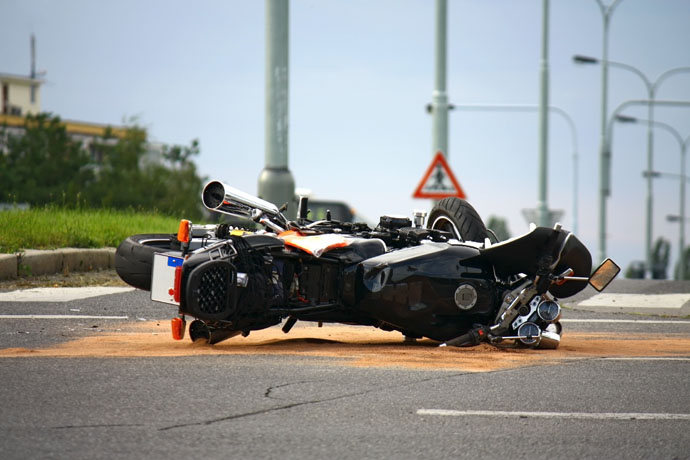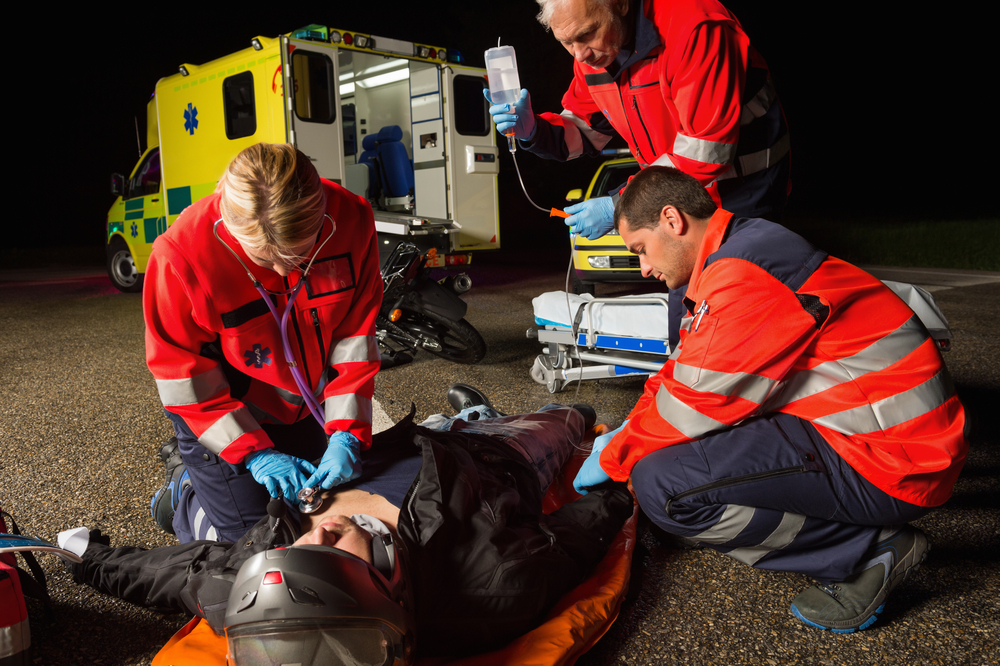

AUTOMOBILE ACCIDENT SUPPORT NETWORK
Of Wisconsin, Dane County
A non-profit resource to provide information to people involved in auto accidents
What Should I do After an Accident?
How To Obtain a Traffic Accident Report
Seek Medical Treatment
Get Support Recommendations
Need help finding legal assistance, medical care, or auto body repair services?
Contact our auto accident support team today!
Types Of Auto Accident Injuries
Injuries from motor vehicle accidents can vary from minor scrapes and bruises to much more serious injuries. Often accidental injuries affect each body part a little differently. Treatment options and recovery times after injuries also differ depending on the body part and the severity of the injury.
Starting with the head and working down to the toe, this is what medical professionals have noticed
HEAD AND FACIAL INJURIES
Head and brain injuries — Both drivers and passengers are vulnerable to head injuries due to hitting a windshield, side window, roof, steering wheel, loose objects or other people. A very common injury is a concussion, which is caused by a blow to the head. With a concussion, also known as a traumatic brain injury, your brain bounces around inside your skull. This can cause chemical changes in your brain. You may not notice any symptoms right away.
- Symptoms such as headache, neck pain, nausea or dizziness can be due to a concussion. Sometimes the symptoms can take days or weeks to appear.
- Treatment: See a doctor especially if symptoms are present. If the symptoms are more severe, you may need to go to the hospital. You could have bleeding in the brain, which is a medical emergency.
- Recovery: Depending on the severity, most patients notice symptoms start to disappear in 2 to 3 weeks after sustaining the injury. The recovery from bleeding under the skull is more complicated and depends on how severe the concussion was.
Facial injuries — Hitting the steering wheel, airbag, another part of the car or a loose object can injure facial skin, teeth, and the bones underneath.
- Treatment: You may need stitches depending on how severe the cut is. For more serious injuries, such as broken facial bones, surgery may be needed.
- Recovery: Scrapes and bruises will take a few days to weeks to heal. Surgical repairs will take longer and may take weeks to months to heal.
NECK and BACK INJURIES:
Neck injuries: Whiplash, for example, is common in rear or side impact crashes. The force of the accident causes your neck to snap quickly. Injuries range from mild neck strain to dislocation of vertebrae.
- Treatment: It is recommended to get checked out by a professional - medical, chiropractic, or otherwise. Mild neck strain can be treated with over-the-counter pain relievers. A dislocation or other serious vertebrae injuries may require surgery.
- Recovery: Whiplash symptoms can last weeks depending on the severity. Recovery from surgery will vary depending on the procedure needed, but full recovery can take months.
Collarbone and rib injuries — In a major accident, your body’s weight can quickly press forward against the shoulder belt which can injure your collarbone. In more serious crashes, rib injuries can also occur.
- Treatment: Visit a medical professional. A broken collarbone can heal on its own, but usually the medical professional will immobilize it with special braces. If the damage is bad enough, surgery may be needed.
- Recovery: The healing process takes anywhere from 6-16 weeks
Back and spinal cord injuries — Back and spine injuries can be some of the worst injuries occurring in the accident. With the vehicle quickly turning this way and that way, the small discs along your spine can be twisted or pushed out of alignment, or your spine can even be fractured. Spinal cord injuries can result in reduced feeling or function loss in extremities. Along with injuries to the spine, soft tissues such as back muscles and tendons can be strained or pulled. Ligaments can be sprained.
- Treatment: See a chiropractor, medical, or alternative professional to get an accurate diagnosis. For minor back pain - rest, along with ice/heat applications, and over the counter pain medicine is recommended. There are a number of treatment options for back pain. The more severe injuries, for example, a spinal cord injury, broken bones, or muscle tears, may require surgery.
- Recovery: Minor muscle strains should heal in a couple of weeks. Muscle tears that require surgery may need therapy and take months to heal. Bones that are surgically repaired typically require 3 to 4 months to fully heal. With spinal injuries, your body does most of its healing in the first 6 months after the injury. However, physical functions that do not heal in the first year after the injury, will likely not return.
OTHER INJURIES
Internal injuries — Wearing the lap belt wrong can cause internal injuries as your entire body weight is rapidly pressed against the belt. During an accident, you can sustain injuries to muscles and many organs. If you have pain in your torso after an accident, you should quickly see a medical professional. Internal injuries can cause internal bleeding, which needs immediate medical care.
- Symptoms: Abdominal pain and/or swelling, dizziness or fainting, developing an area of deep purple skin, headache, seizures, or loss of consciousness.
- Treatment: For muscle strains, we may recommend RICE (Rest, Ice, Compression, Elevation). If minimal internal bleeding is suspected, the doctor may observe the patient to see if the bleeding will stop on its own. For severe internal bleeding, surgery may be required.
- Recovery: Times will vary widely depending on the extent of the injuries and the treatment required. In the case of internal bleeding, the best outcomes result when prompt professional medical care is received.
Lower extremity injuries —. Common injuries include leg, knee and foot sprains, strains and broken bones.
- Treatment: As the severity of the injuries is not known all at once, it is recommended to get medical, chiropractic, or alternative professional treatment. For minor injuries, we may recommend RICE (Rest, Ice, Compression, Elevation) and over-the-counter pain relievers. For broken bones, a cast is usually applied by a medical professional, however, surgery may be required in more severe cases.
- Recovery: A broken leg can take 6 to 8 weeks to heal. Healing time depends on the severity of injuries and the general health of the person.
Psychological injuries — A traumatic event can cause mental health issues, too. Both the driver and passengers in the motor vehicle can have issues such as post traumatic stress disorder, anxiety, and depression.
- Treatment: Seeing a mental health professional can help. They may suggest anxiety management, medication, meditation, or other tools to help reduce anxiety.
- Recovery: There is no set time frame for recovery from psychological trauma. Seeking guidance from a mental health care professional about the mental aspects of recovery can be helpful.
Did you know personal injury support can vary by state?
Frequently Asked Questions
HOW TO DEAL WITH THE INSURANCE COMPANY
For your convenience, we are breaking insurance into 2 topics. First and most important are the “rules” when dealing with insurance companies. Second, we will discuss the different types of insurance and how they work…
HOW TO SELECT A CHIROPRACTOR
FINDING AN THE RIGHT ATTORNEY
HOW TO OBTAIN A TRAFFIC ACCIDENT REPORT
SELECTING A DOCTOR
You should go to the Emergency Room right away if you have any of the following:
Broken bones (or suspect a broken bone)
Loss of consciousness or blacked out
Cuts that need stitches…
SELECTING A BODY SHOP
It is important that whoever works on your car uses authentic factory parts. There are cheaper parts that may actually be more dangerous in a new accident that could lead to more severe injuries or death…



